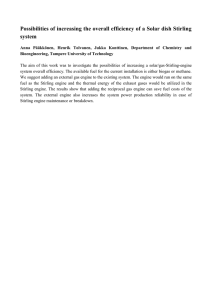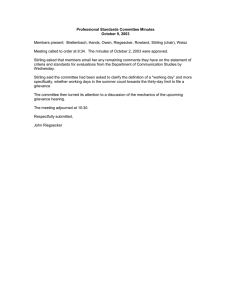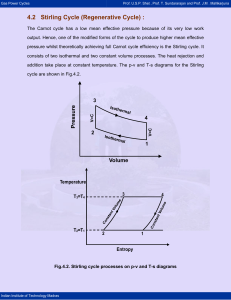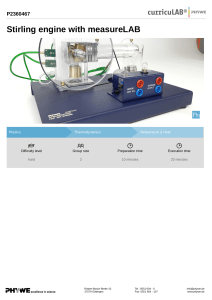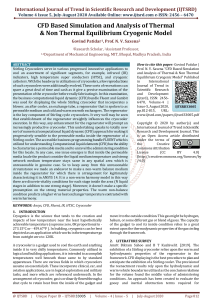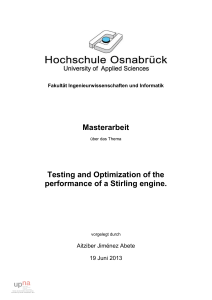Improving Thermal Efficiency and the Stirling Engine Matt Kurman Advisor: Dr. Dooley
advertisement
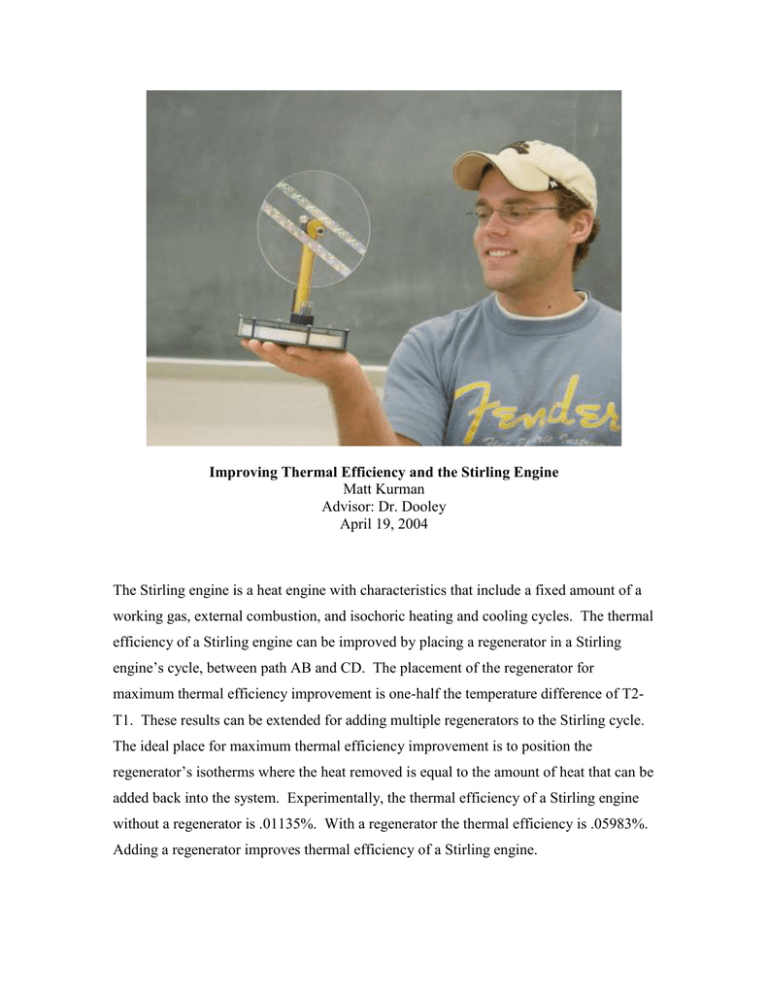
Improving Thermal Efficiency and the Stirling Engine Matt Kurman Advisor: Dr. Dooley April 19, 2004 The Stirling engine is a heat engine with characteristics that include a fixed amount of a working gas, external combustion, and isochoric heating and cooling cycles. The thermal efficiency of a Stirling engine can be improved by placing a regenerator in a Stirling engine’s cycle, between path AB and CD. The placement of the regenerator for maximum thermal efficiency improvement is one-half the temperature difference of T2T1. These results can be extended for adding multiple regenerators to the Stirling cycle. The ideal place for maximum thermal efficiency improvement is to position the regenerator’s isotherms where the heat removed is equal to the amount of heat that can be added back into the system. Experimentally, the thermal efficiency of a Stirling engine without a regenerator is .01135%. With a regenerator the thermal efficiency is .05983%. Adding a regenerator improves thermal efficiency of a Stirling engine.
